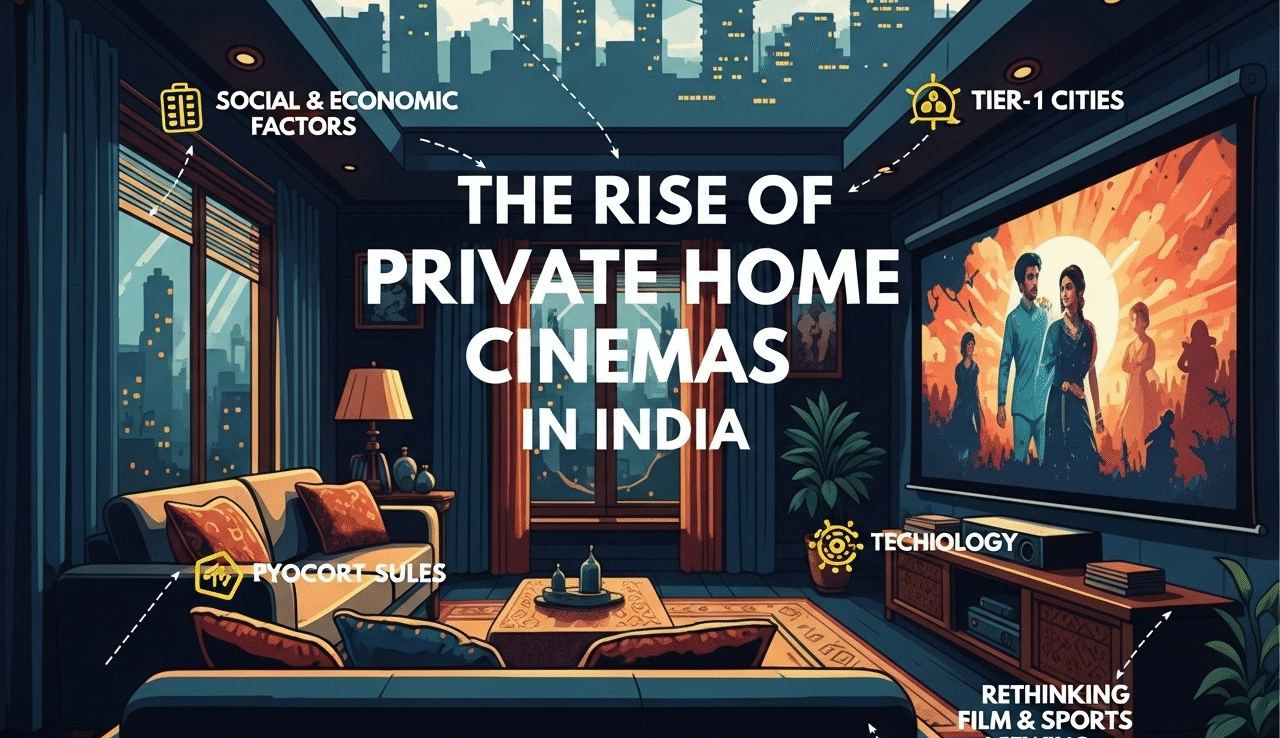Overview
This article examines the rapid rise of private home cinemas in India. It covers the social and economic factors driving the trend, the technology enabling it, and why both Tier-1 and Tier-2 city residents are rethinking how they watch films and sports.
The Shift in Entertainment Habits
Multiplex attendance in India has been declining among high-income households, while home entertainment investments have surged. Two key changes are behind this shift:
-
On-demand content: Platforms such as Netflix, Prime Video, and Disney+ Hotstar have made new releases and premium shows available instantly.
-
Home-focused lifestyles: Post-pandemic, discretionary spending has shifted from public venues to home upgrades, including dedicated entertainment spaces.
What was once seen as a luxury is now considered a practical lifestyle enhancement for many urban families.
Technology That Matches or Surpasses Theaters
Today’s home cinema systems are designed to deliver an immersive experience that equals or exceeds a commercial theater:
-
Visual quality: 4K and 8K projectors, OLED displays, HDR10+, and high-end laser projection.
-
Audio immersion: Dolby Atmos and DTS:X systems provide three-dimensional surround sound.
-
Automation: Voice-controlled lighting, AI-based sound calibration, and integrated seating controls.
According to IMARC Group, the Indian home theater market is projected to grow at over 18% CAGR from 2024 to 2033, with adoption rising in both metros and mid-sized cities.
Cost Efficiency Over Time
The perception that private cinemas require extreme budgets is outdated.
-
Entry-level, high-quality setups begin around ₹5 lakh.
-
Fully dedicated cinema rooms with professional acoustics, seating, and automation range from ₹15 lakh to ₹50 lakh. (UrbanDAC, NoBroker)
When spread over several years, the investment often compares favorably with regular multiplex outings for a family, especially for those who prefer premium seating and frequent visits.
A Social and Cultural Investment
In India, a home cinema is not just for individual use—it becomes a venue for hosting. Families use these spaces for weekend films, live cricket screenings, and festive gatherings.
Examples from across the country illustrate the point:
-
NRI homeowners in Ahmedabad are adding compact Dolby Atmos rooms.
-
IT professionals in Hyderabad are integrating cinema spaces into their apartments.
-
Film enthusiasts in Chennai are replicating commercial theater acoustics at home.
The New Standard of Home Entertainment
The move towards private cinemas reflects a broader trend: high-income households expect personalized, on-demand experiences without compromise on quality. With modern technology and design, it is possible to achieve a cinema-grade experience in almost any home configuration.
Pro Tip: In rooms under 500 sq ft, opt for acoustically treated walls, a 4K ultra-short-throw projector, and wireless Atmos speakers for maximum performance with minimal space requirements.
Next in the series: “5 Home Theater Myths That Could Cost You Lakhs.”
AVcore — Helping you build India’s most irresistible Home Theater.


